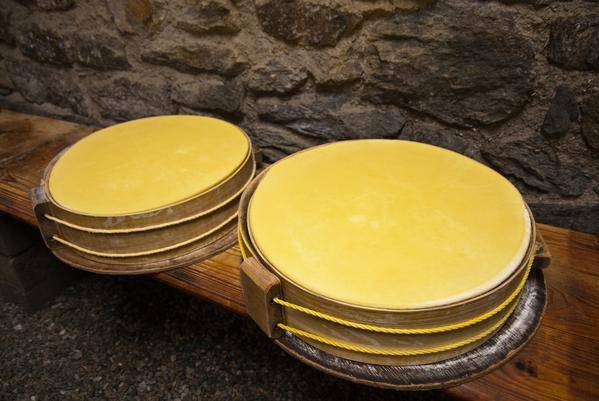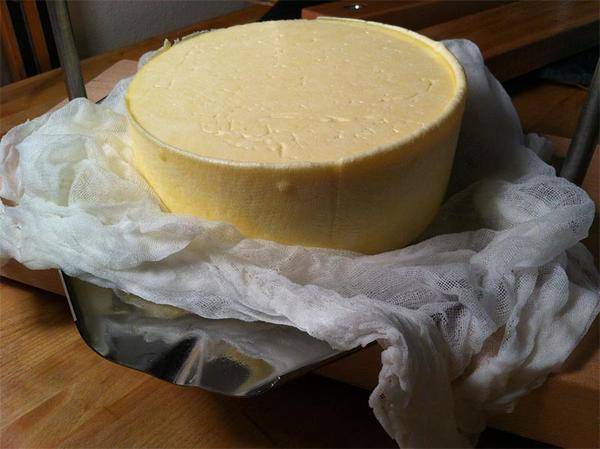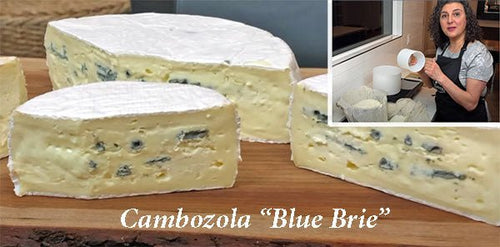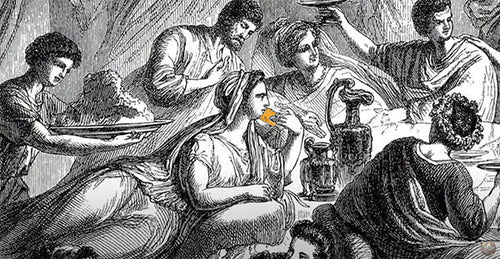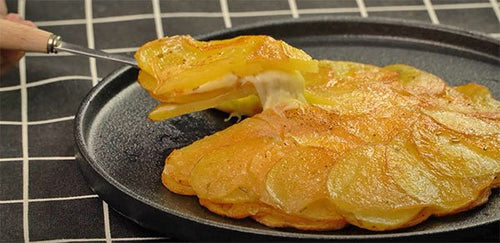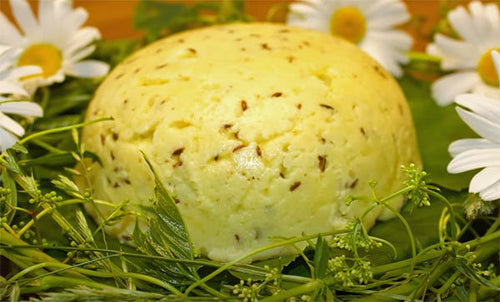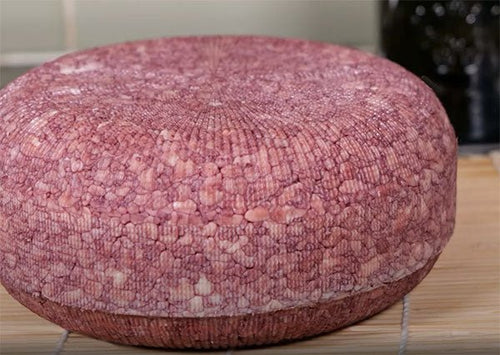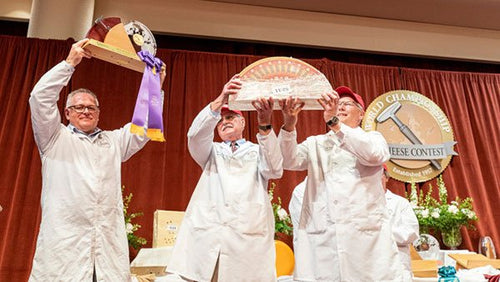Cheese Making Recipe of the Month
Queso Oaxaca From Mexico
This cheese comes from the Oaxaca (WaHaKa) region of Mexico. It's abeautiful, stretched curd cheese, wound into a ball for a unique presentation.Commonly known as Quesillo, it is, by far, the most popular cheese for making quesadillas.
Stories say that in the 1950's, Italian influence came into the area and was the methodology behind this cheese, but many elders say they remember this cheese well before then. Although this cheese is much like Italian Mozzarella, research shows it's quite different in how it evolved.
Have fun with this amazing cheese and share please photos along the whey.
Cheese Making Questions & Answers
Can My Cheese be Pressed Longer
Q. Rennet variations - Can you tell me the difference between animal and vegetable liquid rennet? Are they both double strength? I already have the tablets. Can I use them instead
A. Same enzyme - The main component in all of our rennet is an enzyme called chymosin. This is what causes the proteins in the milk to come together and form a curd. Both the animal and vegetable rennet are standardized so they will always be the same strength batch to batch. The vegetable rennet is from a microbial (vegetative) source and the animal comes from calf. The vegetable rennet is double strength and the animal is single strength.
How to Care for Aging Blue Cheese
Q. Bulk cultures - I have begun using the bulk mesophilic culture MM100 for my hard cheeses. As you know, for someone who makes a lot of cheese, the bulk culture is more affordable than using the C101 packets. Most of the recipes call for a packet of starter instead of a measured amount. How should I convert a recipe that uses packets instead of teaspoons?
A. Choose carefully - Your choice of the MM100 is quite different from the C101 packets that I described. The similar culture would be the MA11 large packs. The MM100 is actually a gas producer as well as a producer of the butter flavor, not the best choice for some cheeses. The amounts to use for either of these larger packs would be somewhere between one quarter and 1/2 teaspoon per 2 gallon batch depending upon the milk quality (raw milk requires slightly less).
The Underside of Cheese is Damp While Aging
Q. To cool the whey - I use the Colby recipe you have in your recipe section. My biggest challenge with this cheese is getting the temperature of the whey down to under 80°F without it taking all day. I have begun adding an ice cube to the whey. This cools the whey to below 80F rather quickly. Is there a problem with doing it this way?
A. Chill the water - For the cold wash, the ice cubes would be a bad idea because the temperature would be very inconsistent from place to place in the current mass. A better plan would be to chill the water being used with the ice. The idea is to use water at the proper temperature to reach 80°F when you add the appropriate amount.
Have a cheese making question, we're here for you: info@cheesemaking.com
Meet a Fellow Cheese Maker
Dandelion Hill Farm in Sheffield, MA
Over 24 years ago, Peter and Melissa Martin discovered that their youngest daughter couldn't digest cow's milk. A neighbor gave them a quart of goat's milk and she had no problem with it. So, being the great parents that they are, they bought a goat. And another, and another and...
Now their children (4) are grown but they are still raising Nubians (for milk) and Kikos (for meat).
Melissa makes chevre and yogurt from their luscious Nubian milk and Peter is in the process of building a new make room. They are very excited about becoming licensed to sell their cheese in 2017.
News From Fellow Cheese Makers
New Cheese Maker in Texas
I received the "8 cheeses in one box" cheesemaking kit as a gift. As soon as I opened it, my husband quoted, "Blessed are the cheesemakers!"
I spent the day making my first cottage cheese, learning all about cheese, and while the curds were a bit on the small side, the taste is great!
I used Promise Land milk, but next time I'm going to try Mill King from a dairy near Waco that sells at a cute store near my house called Ingredients.
The cheese ended up more like Boursin than cottage, so I mixed in garlic, parsley and gobbled it down on crackers.
I tried to make Mysost from the whey, and I am not really sure how that turned out - it seemed a bit chalky, but I will give it another shot when I make cream cheese next. Or maybe I'll just make pancakes with it. :)
Aaron Bandy, Austin, Texas
Loving Livarot
Here's a picture of my attempt at the Livarot, but I guess I kept it for a tad too long as it was a bit tougher than expected. In the beginning, it looked more like the picture on your site :)
Couldn't cut it any earlier though, as it was a birthday present for my father. Circumstances made us celebrate it a month late, so the cheese had to wait, too.
Also, it was my first try with natural rinds. Quite an adventure - I was very excited about how smooth that went! This small cheese (at right) is made from about 8 liters of fresh milk. I hijacked our workshop fridge for maturing the cheeses:)
Machtelt Garrels, Belgium
Perfect Alpine Tomme
Thank you, Jim, for this amazing recipe (Alpine Tomme). It is now my go-to when I have a fridge full of goat milk.
I have been quadrupling the recipe to make an 8 gallon tomme out of raw goat milk. The first one is half-eaten, the second is in the cave, and the third is in the vat warming up.
I am leaving a natural rind and just rubbing it down with olive oil. While I am tempted to try your new Alpine recipe, I am hesitant to deviate from this one.
Kristin Hammock, Midland, Georgia
A Bit of History
I have a question about an old rack that I have acquired. I was told it was used for cheese making. The buckets were used to catch the dripping while the cheese was drying.
I have not been able to find any information on the rack online. Do you have any idea if this indeed was used for cheese making and the age of it? Any information would be greatly appreciated.
Debby M. from Mississippi Gulf Coast
__
Jim Wallace (our technical advisor) sent Debby a few of his own pictures:
Jim: Yes, these are a traditional form of draining board - probably from early 20th century or late 19th century. The typical mortise and tenon joints and what look like cut nails would indicate this. Here are a couple examples of these draining boards I found in Spain this past Spring:
The forms would be placed on this and the draining whey channelled to the bucket. The patina is nice and probably from residual lactate and calcium.
The molds also look great. Looks like they are bound with the traditional bent piece of branch.
For a cheese maker, this is something really worth hanging on to if you have the space.
Please send your cheese making news & photos to: moosletter@cheesemaking.com































